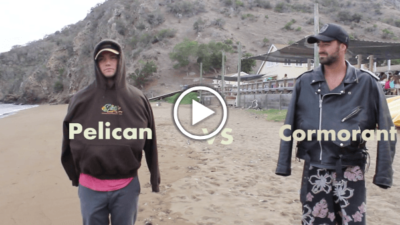
Camouflage is one of the most widely used adaptations by animals to both hide from predators and to surprise prey. There are many different types of camouflage including concealing coloration, disguise, disruptive coloration, and mimicry. There are many different fish we see hear at CIMI that give us great examples of camouflage. Cabezon fish are a prime example of how camouflage is used. The coloration of a Cabezon allows it to perch motionless on rocks and algae without being seen. Prey or predator could be a foot away and still not see it. This advantage point allows for quick ambush. Other fish such as Scorpionfish have encrusted algae on their bodies to better camouflage in their surroundings. Flat fish like Halibut and CO Turbots blend in with the sandy ocean floor and also cover themselves to better hide while waiting to ambush.
Here at CIMI we wanted to try and mimic the Cabezon fish strategy. Toyon Bay CIMI instructor Trevor waited in areas that allowed him to blend in while he waited for passing instructors. Each passing instructor got a scare but also a great laugh. It’s a good thing this was not the real predator vs. prey or Trevor would have gotten them all. He also would have had a full tummy.



